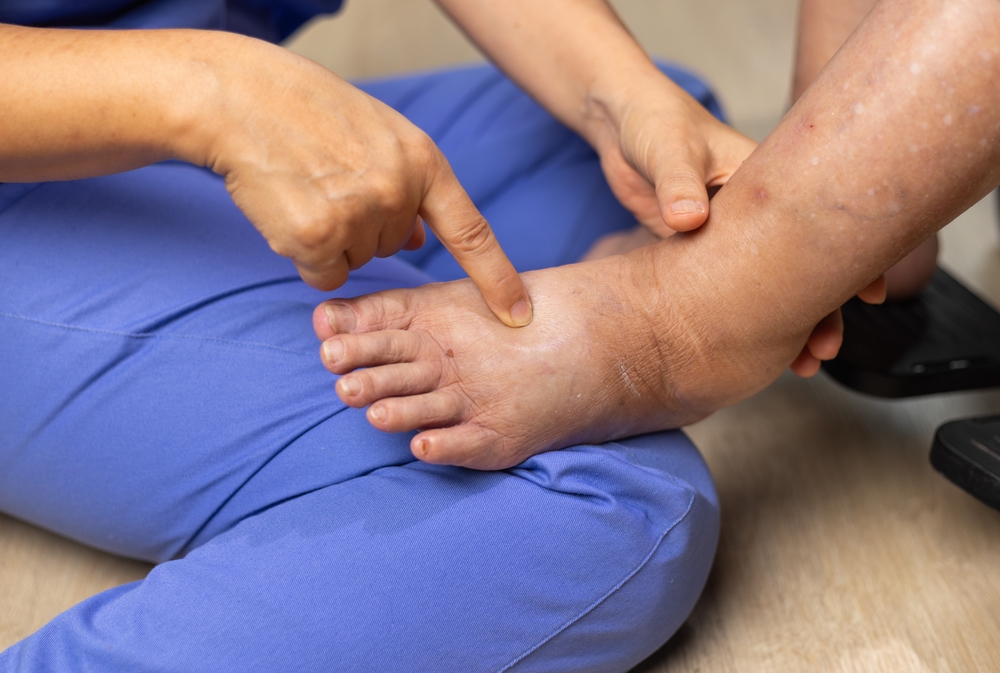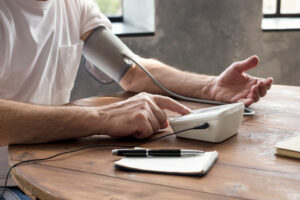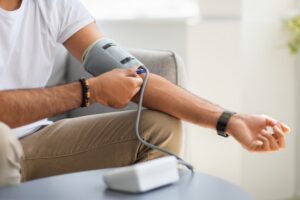Living with lymphedema means taking an active role in managing your condition every day. While professional therapy is essential, effective lymphedema home care strategies are the foundation of long-term success. Consistent lymphedema home care helps control swelling, reduce discomfort, and lower the risk of complications. Empowering yourself with the right techniques allows you to maintain the progress made in therapy and live more comfortably. Before starting any new home care routine, it is always best to consult with your certified lymphedema therapist or a vascular health specialist. Get a consultation with the best vascular disease specialists in Brooklyn.
Essential Lymphedema Home Care Strategies
Once you have completed the intensive phase of Complete Decongestive Therapy (CDT) with a therapist, the focus shifts to a daily self-care routine. These practices are designed to maintain the reduction in swelling and keep your limb healthy.
- Consistent Use of Compression Garments
Compression is a cornerstone of lymphedema management. After your limb has been decongested, your therapist will fit you for compression garments, such as sleeves or stockings.
- Daytime Wear: These garments provide active pressure to prevent fluid from re-accumulating in your limbs as you go about your day. They should be worn every day; from the time you get up until you go to bed.
- Proper Fit is Key: Garments that are too loose will be ineffective, while those that are too tight can be harmful. Get professionally measured and replace your garments every 3-6 months as they lose their elasticity.
- Nighttime Compression: Your therapist may recommend a different type of compression for nighttime, such as a foam-filled garment or multi-layer bandaging, to provide a gentle, constant pressure while you sleep.
- Meticulous Skin and Nail Care
Lymphedema makes the skin in the affected area more vulnerable to injury and infection. A diligent skincare routine is non-negotiable.
- Daily Cleansing: Gently wash the affected limb each day with a mild, pH-neutral soap and pat it dry thoroughly, especially between fingers and toes.
- Moisturize: Apply a low-pH lotion daily to keep the skin hydrated and prevent cracks that can allow bacteria to enter.
- Protect from Injury: Be vigilant about preventing cuts, scrapes, insect bites, and burns on your affected limb. Use insect repellent, wear gloves when gardening, and be careful when cooking.
- Careful Nail Care: Cut toenails and fingernails straight across to avoid ingrown nails. Do not cut or push back your cuticles.
- Therapeutic Exercise
Gentle exercise helps stimulate lymph flow by activating the muscle pump in your limbs. Your therapist will recommend specific exercises tailored to your needs.
- Incorporate Movement: Perform gentle range-of-motion and stretching exercises daily. Activities like walking, swimming, and yoga are often recommended.
- Wear Compression: Always wear your compression garment during exercise to support the limb and maximize the benefits of muscle contraction.
- Listen to Your Body: Avoid strenuous activity that causes pain or a significant increase in swelling. If you notice any negative changes, consult your vascular health specialist or therapist.
- Self-Manual Lymphatic Drainage (MLD)
Your therapist can teach you a simplified version of MLD to perform at home. This gentle massage helps redirect lymph fluid away from congested areas. Following the specific sequence taught by your therapist is crucial for it to be effective and safe.
When to Seek Professional Help
While home care is vital, it doesn’t replace the need for professional oversight. Regular follow-up appointments are important for monitoring your condition. You should contact your doctor or therapist immediately if you notice:
- Sudden increase in swelling
- Redness, warmth, or pain in the limb, which could signal an infection (cellulitis)
- Fever or chills
- New cracks or breaks in the skin
- Your compression garments no longer fit correctly
For residents in New York, establishing a relationship with a specialized clinic is beneficial. A vascular clinic in Brooklyn can offer ongoing support, check-ups, and access to certified therapists to ensure your home care plan remains effective. If you are struggling to manage your symptoms, a visit to a vascular clinic in Brooklyn can help get you back on track.
Living Well with Lymphedema
Adopting these lymphedema home care strategies as part of your daily routine is the most powerful thing you can do to manage your condition. Consistency is key. By protecting your limbs, using compression, exercising, and performing self-massage, you can maintain your health, mobility, and quality of life. Remember, you are the most important member of your care team. For any vascular problems, call us on + 1-718-367-2555. The Vascular Disease Specialists at Doral Health & Wellness consistently have outstanding patient satisfaction ratings. The professionals at Doral Health & Wellness Vascular Health Department Brooklyn can improve your health and quality of life because of their vast training and experience. New Yorkers can get the greatest medical and surgical vascular care at Doral Health & Wellness Brooklyn. If you need help, register your information and make direct contact with our doctors at https://yuz88hfiyh7.typeform.com/Doralintake or send an email to info@doralhw.org. Visit us at 1797 Pitkin Avenue, Brooklyn, NY 11212.






